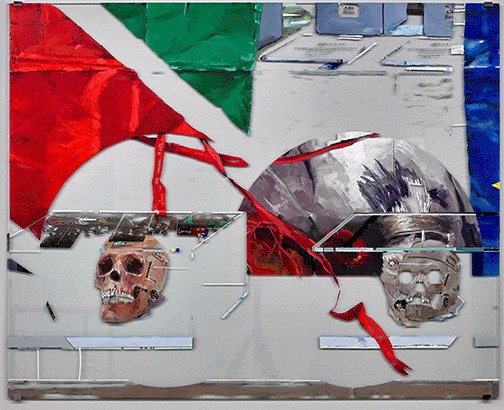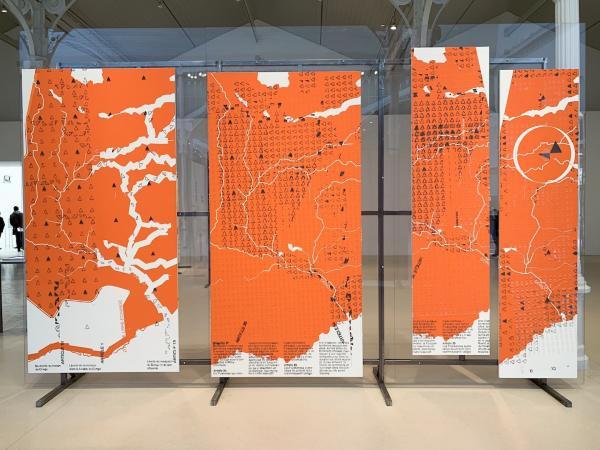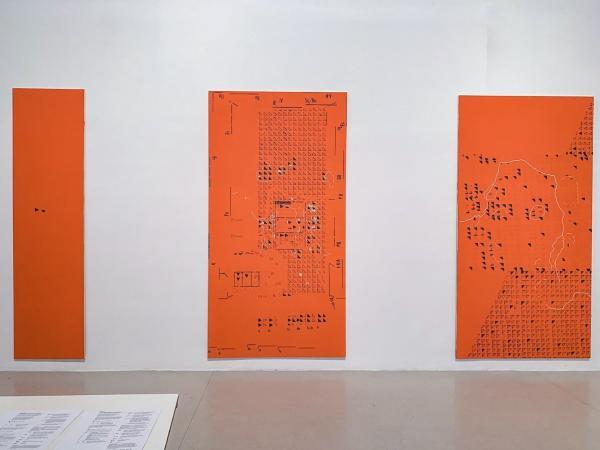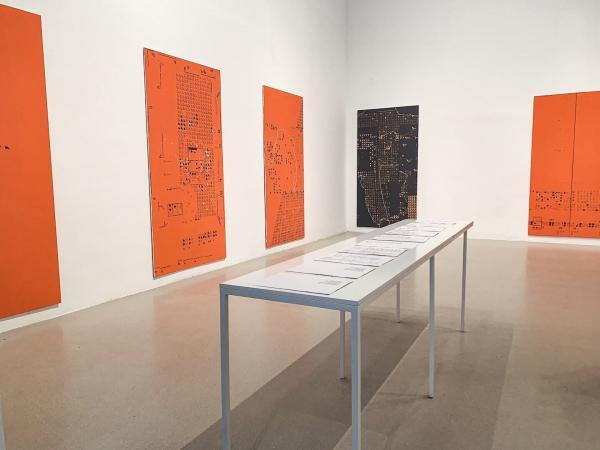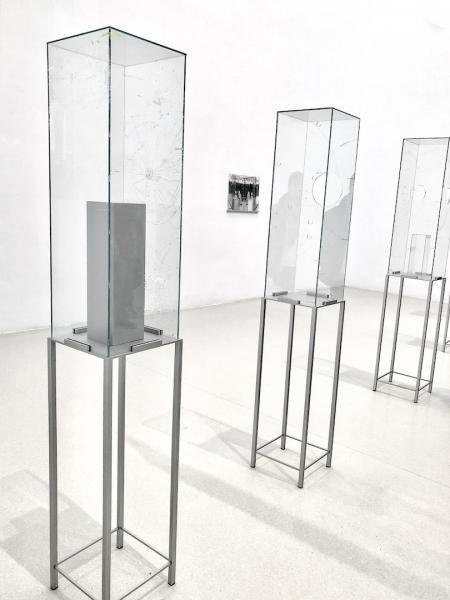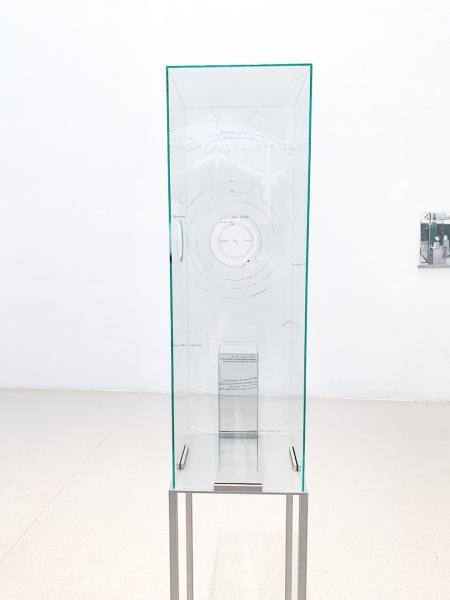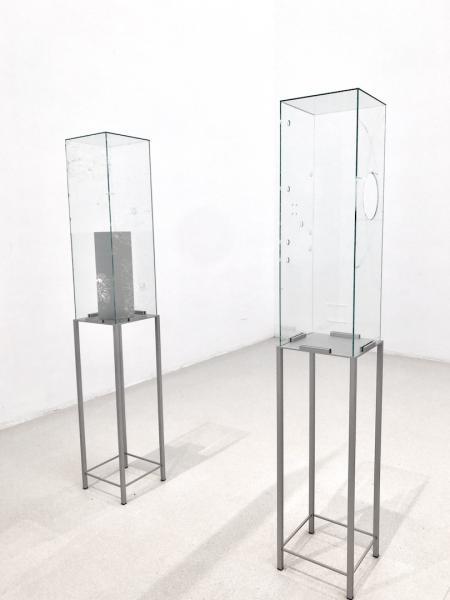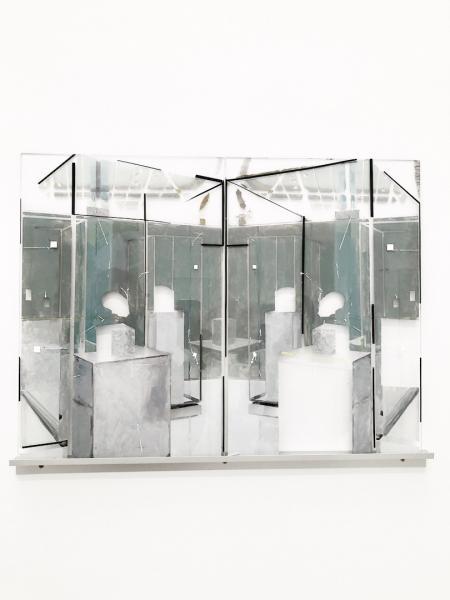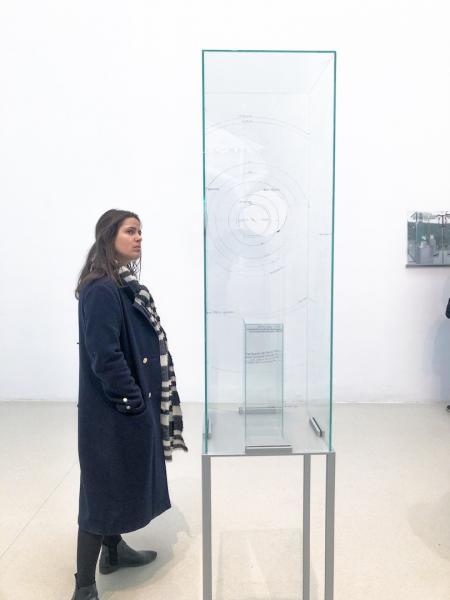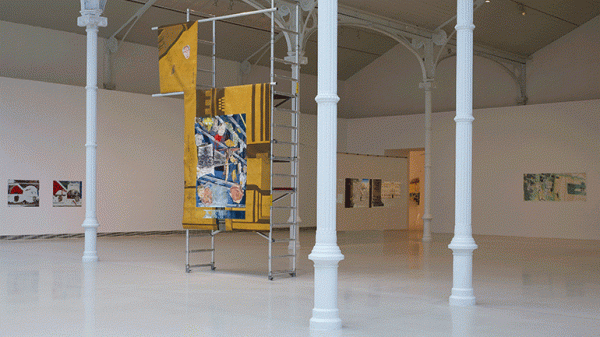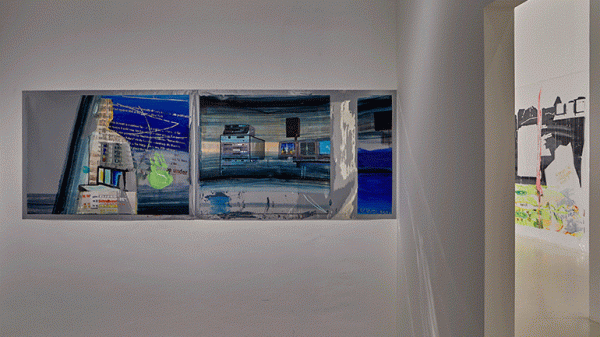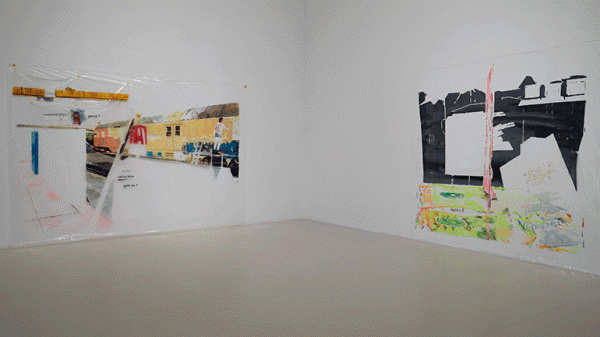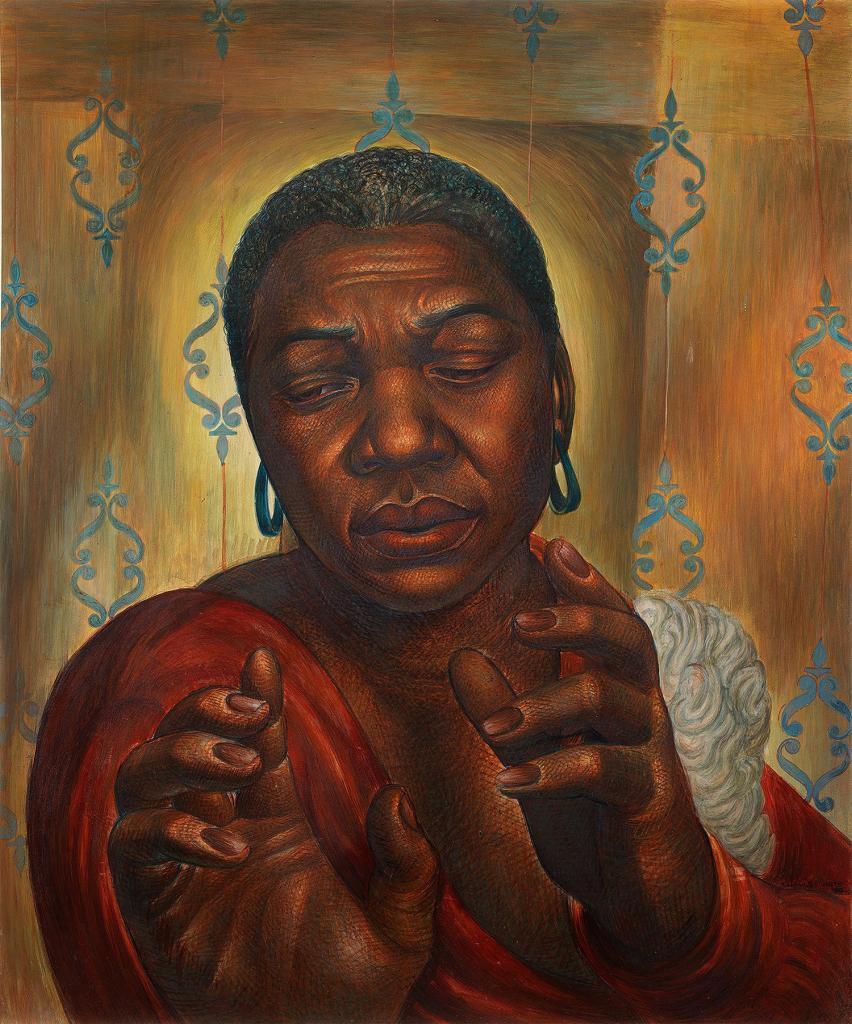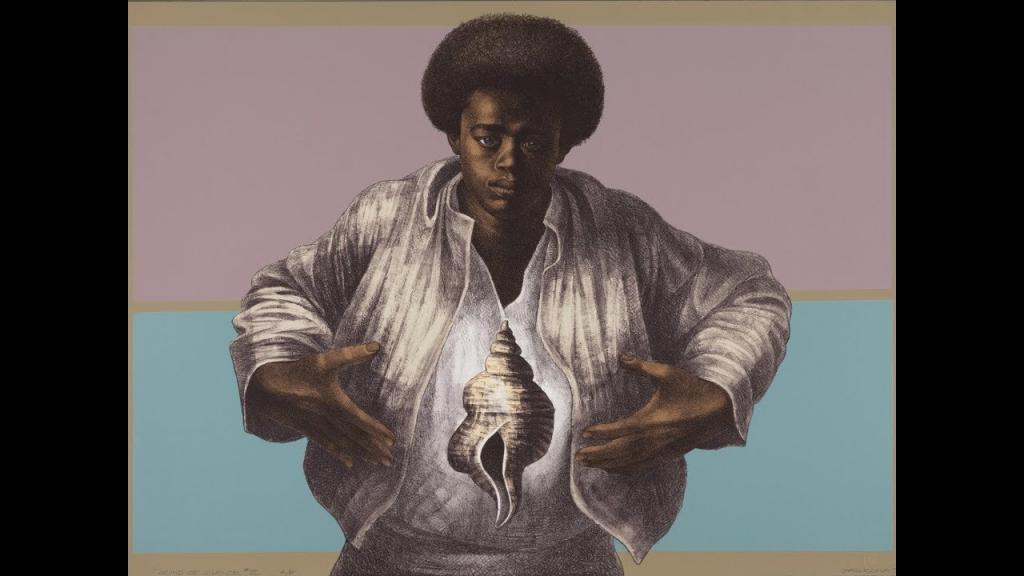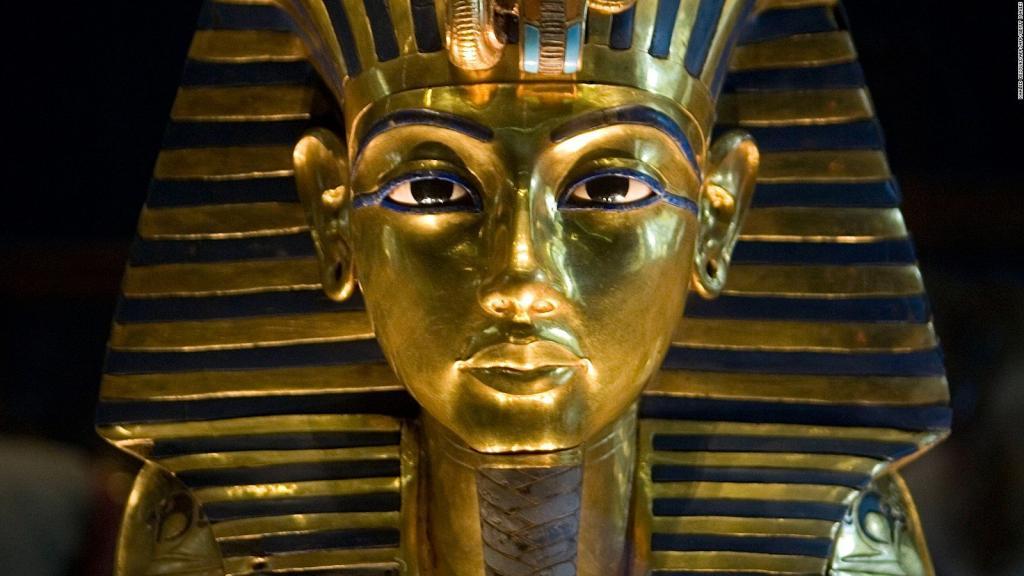Dierk Schmidt, “Guilt and Debts” : a retrospective at Reina Sofia Museum
09/10/2018 - 10/03/2019In October 2018, the Reina Sofía opened a retrospective exhibition of the work of Dierk Schmidt, with the working title Guilt and Debts. The exhibition takes place at the Palacio de Velázquez in the Retiro Park, a venue built in the late 19th century and originally used for colonial and industrial exhibitions, as well as artistic salons. The Palacio is a site that speaks historically to Schmidt’s preoccupation with themes such as the de-colonization of history, the restitution and changing status of ethnographic artifacts, and the world’s current refugee crisis.

The career of German artist Dierk Schmidt (Unna, 1965) has always been related to social, political and institutional critique. Schmidt makes use of the aesthetic and the visual means to disrupt positivist, and linear conceptions of history with respect to the omissions and violence in colonial narratives — one of the core themes running through his work, along with a need for reparation and responsibility, a need for the restitution of plundered objects and the related international law — the manipulation of museum discourses and the contrived and dramatic state of televised politics.

The retrospective held by the Museo Reina Sofía assembles some of Schmidt’s most ambitious projects and the most extensive presentation of his work to date. In The Division of the Earth (2005) — two series of large-scale canvases on the division of Africa at the Berlin Conference of 1884 — the structural violence targeted at the African continent is represented in a system of diagrams and chromatic codes to render the real effects of abstract, political and economic strategies in specific territories and communities.

In Schmidt’s view, colonial greed stems from capitalism, and he reflects on its destruction of the environment and its instability and alienation in Think It All – Untitled – Run Away (1995) and McJob (1997). Similarly, colonialism is manifested in a certain way of exhibiting ethnographic objects and in resistance towards restitution, which grants continuity to colonial mental structures. Since 2009, Schmidt has realised this institutional critique in actions with the activist collective Artefakte, and in works such as Berlin Castle Ghosts (2002–2004), thus calling out the contradiction implicit in the German authorities’ reconstruction of an 18th-century imperial palace to be used as a museum of world cultures. In Schmidt’s work, the showcase, understood as an institutional “screen”, acquires significant protagonist. Through the analysis of social histories that question the supposed transparency of these omnipresent museum objects on display. Instead of regarding it as an instrument with sufficient credibility to navigate through other cultures, Schmidt presents it as a magical apparatus in which different perspectives are reflected, duplicated, and folder over like the suspended fragments of a painted image, fluttering on the glass surfaces like butterflies from trapped historical past.
Museum devices are revised in the series Broken Windows (2013–in progress), where the artist cites this ubiquitous support in museums to allude to the decontextualization and fetishism of the ethnographic object, and to the decline of experience, in which these glass structures, painted by Schmidt, remain frames and frameworks through scratches and perforations, referring at once to the colonial practices of plundering and initiatives of resistance and restitution.
Dierk Schmidt’s oeuvre can be defined as a continual exercise of updating and relocating, and he is always mindful of the contexts providing the backdrop for his artistic practice. Consequently, for the exhibition Guilt and Debts he has devised a site-specific project related to the role of the Palacio de Velázquez — where the show is displayed – directly after it was built in 1883 and in view of its housing, in 1887, part of the monographic exhibition of the Philippines, Mariana and Caroline Islands, before becoming the Biblioteca y Museo de Ultramar (the Museum-Library of the Overseas). Moreover, Schmidt brings to the fore another time in Spain’s colonial history: the early years of the Franco regime and its imperialist ideology via collections amassed from the Sahara by archaeologist Julio Martínez Santa-Olalla

Dierk Schmidt’s take on the genre of history painting revolves around the self-reflexivity of the painted image through the art historical genealogies that inform it, the material realities that it takes as its subject matter, and the institutional conditions that are its social context.
Working in cycles or combinations, Schmidt bases his paintings and painterly installations in research that combines speculative and documentary data. Situating his reconstructions of perceptual terrains in a lineage of a materialistic history painting – including artists such as Théodore Géricault, Öyvind Fahlström, Richard Hamilton, and Allan Sekula – his approach makes for a dialogue with what Verônica Tello has called “heterogeneous visual cultures and multiple temporalities.” With their point of departure in a comprehensive reflection on the visualization of cultural counter- memory and its external and internal contradictions and impossibilities, Schmidt’s abstractions, exposés and fictionalizations of history address individual and collective possibilities for agency.

